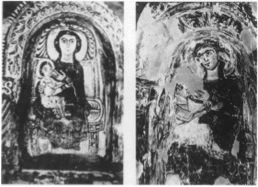It’s no great secret that medieval literature is my favorite period of literature. I read monastic authors…for fun. I get that’s weird to most people, but the older I get, the more I realize everyone has their “weird thing.” It’s what makes people fun. And when K.P. requested that this month’s theme be about romance, my mind went instantly to one of my favorite (and weird) romance stories of the middle ages.
Well, really, it’s my favorite because it’s weird.
But also, because it isn’t just a romantic match ignited by physical passion; rather, the passion was ignited by intellectual equality. I’ve always joked I’ll find my perfect match when our hands touch reaching for the same book at Barnes & Noble…I imagine that’s what the “meet cute” was like for Abelard and Heloise.

Heloise’s uncle wanted only the best education for his niece. Contrary to many misconceptions, women could receive an education in the middle ages…provided they could pay for it. And Heloise’s uncle could. Heloise’s reputation as an intellectual–and a beauty–attracted Peter Abelard, who offered his tutoring services. The two began a passionate love affair that ended in Heloise’s pregnancy, forcing them to marry in secret–which she, knowing it would be the end to both their intellectual pathways, opposed.
Heloise’s uncle and other family members, however, believing that Abelard had ruined their kinswoman, sent a group to Abelard at an inn to attack him and have him castrated–a harsh, but poetic, punishment.
After this, Abelard and Heloise agreed to surrender to a monastic life. Yet, it is this life that leads them to engage in a series of letters which demonstrate their intellectual brilliance. They can no longer be physical lovers, but they can still love what fiercely attracted them to one another in the first place–the other’s mind. Though the letters, Problemata, and the relationship, are products of their time, and must be viewed thus, there is a very present equality in this relationship that seems almost ahead of its time.
For two people as passionate as Abelard and Heloise, one can only imagine how difficult their forced separation was. Yet it is evident from their correspondence that this separation split them in body only, not in heart, mind, or soul. Still, the pain of the physical separation is decidedly present in these letters, especially because, though they might see one another again, they would never be able to communicate on the same level they once had. They must find a new way to relay their passions for one another. In her letters to Abelard and in Problemata, Heloise seems to find a new way to reassess the relationship by attempting to adjust to her new life, going back to their beginnings, and manipulating the subject matter.
In her letters to Abelard, Heloise makes it clear that though she lives a monastic life, she does not feel it as she ought; rather, she does it for his sake (69). Still despite her claim that she is “sighing” over her lost love, and not her sins (68), she does make an astounding effort in her new life by engaging Abelard in various theological matters, as she does in Problemata. After Heloise’s letter to Abelard claiming her distress at their situation, Abelard replies by telling her the reasons they must endure this trial and asking that she speak no more of it. In her reply, Heloise consents to not mention it, and immediately turns to other subjects. But before doing so, she notes that Abelard “has it in [his] power to remedy my grief, even if [he] cannot entirely remove it” (93). She agrees to make the attempt for his sake, but by ending the subject thus, she not only gives herself the final word, but also lets him know her feelings toward his request without seeming ungrateful. It is, in a sense, a very diplomatic way of ending a conversation that respects Abelard without debasing herself. She holds him as equal, and expects the same in return.
Another way that Abelard and Heloise seem to renegotiate their relationship is by

returning to the origin of the relationship itself. They met over books, and Abelard notes that what drew him to her was her “gift for letters” (10). Once they begin their renegotiation, they return to that intellectual conversation. Problemata is an intellectual text in itself, in that Heloise poses theological questions and inconsistencies, and Abelard replies with his thoughts. Similarly, in their letters, after Heloise agrees not to mention her pain, she turns to Abelard and asks again for his tutelage. She wants him to come and teach her and the other nuns about the history of their order and to help her create a Rule by which they should live (94). This is a renegotiation in that in their original relationship, while Abelard was her tutor, they did much more than study. Now, it seems, he can teach her all he knows, and they can each focus on each other’s intellect, since the major physical aspect of their relationship is off limits.
A third way they reassess their relationship is through their “question and answer sessions.” In Problemata, Heloise is asking all the questions, but these questions, though not theologically simple, do not paint Heloise to be at all ignorant of their answers. A lawyer’s mantra is “Never ask a question to which you do not already have the answer.” This seems to be Heloise’s thoughts in Problemata, as well. She asks questions and sets up Abelard’s brilliant answer, so that she has created a dialogue piece that works kind of like a jigsaw puzzle: each piece fits together perfectly. She uses similar tactics in her letters to Abelard, posing questions to him which she—regarded as intelligent in her own right—could answer, but it seems her point is to distract herself and Abelard from their pain and turn to “more important” subjects (93). One such example in her letters that is vaguely reminiscent of Problemata is when she asks Abelard about idleness: “But was not Mary sitting idle in order to listen to the words of Christ, while Martha was working for her as much as for the Lord?…(110). This question sounds like her questions in Problemata, but in this instance, she goes on to answer it herself and even compare it to those in monastic life who chant and read God’s word, but never meditate on it (110). In this way, she manipulates the subject matter of their correspondence to distract from their physical separation and re-focus their energy on more intellectual (and, for the time period, read “higher”) matters.
Their first few letters definitely portray the pain Abelard and Heloise felt at their forced separation, but this does not mar their overall relationship. As Heloise shows Abelard she is adjusting to her life in the convent (whether or not she actually is), their relationship continues and evolves, showing not only each person’s intellectual prowess, but that each of their individual minds is strengthened when they are united as one.
Two heads really are better…especially when they respect the other’s intellectual capacity.
Works Cited
Abelard, Peter. The Letters of Abelard and Heloise. Betty Radice, trans. Penguin Books, 1974.
Featured Image
Fortescue-Brickdale, Eleanor. “Abelard and Eloise.” Golden Book of Famous Women, Hodder and Staughton, 1919.




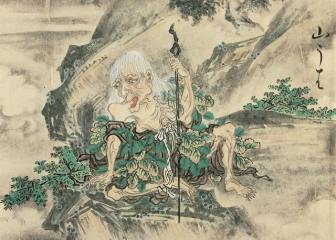




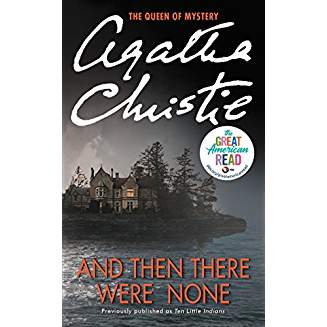


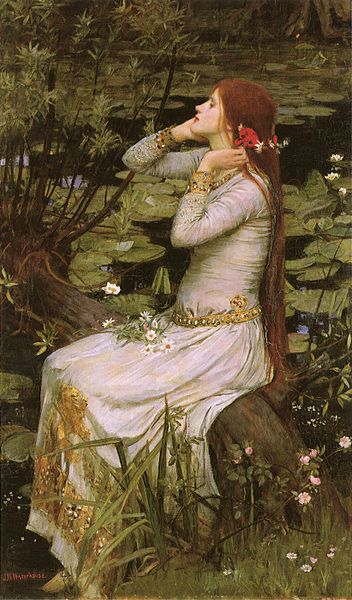
 The passivity of Ophelia’s death coupled with later statements in the play that suggest it was far from an accident leave us with ambiguity. Did she fall, as Gertrude suggests, and was not in her right mind enough to save herself or even, in fact, realize the danger she was in? Or, as a gravedigger suggests, did she see death as the only way to escape the cage the men in her life had created for her? Either way, her drowning instills discomfort, one Klein attempts to lessen by having her escape it entirely. With her knowledge of herbs and medicines as well as help from Horatio and even Gertrude, she’s able to fake her own death and restart her life in a convent. Though she knows no one outside Elsinore, she can’t get any more alone than she was in the castle. By paying attention to her when no one else does, Klein portrays an Ophelia who is “the author of [her] tale, not merely a player in Hamlet’s drama or a pawn in Claudius’s deadly game.”
The passivity of Ophelia’s death coupled with later statements in the play that suggest it was far from an accident leave us with ambiguity. Did she fall, as Gertrude suggests, and was not in her right mind enough to save herself or even, in fact, realize the danger she was in? Or, as a gravedigger suggests, did she see death as the only way to escape the cage the men in her life had created for her? Either way, her drowning instills discomfort, one Klein attempts to lessen by having her escape it entirely. With her knowledge of herbs and medicines as well as help from Horatio and even Gertrude, she’s able to fake her own death and restart her life in a convent. Though she knows no one outside Elsinore, she can’t get any more alone than she was in the castle. By paying attention to her when no one else does, Klein portrays an Ophelia who is “the author of [her] tale, not merely a player in Hamlet’s drama or a pawn in Claudius’s deadly game.” 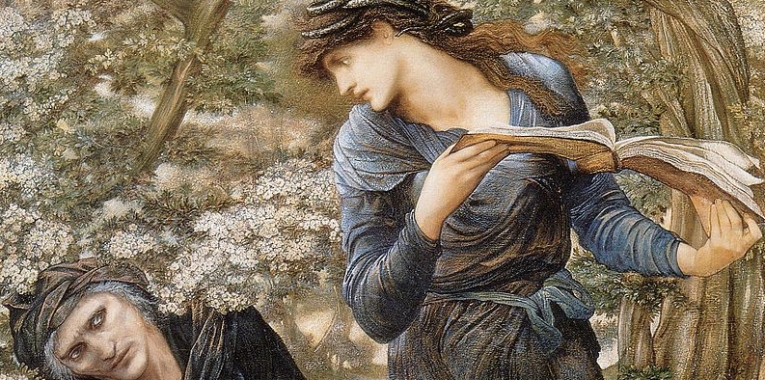
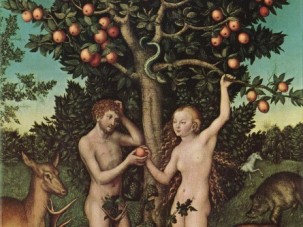


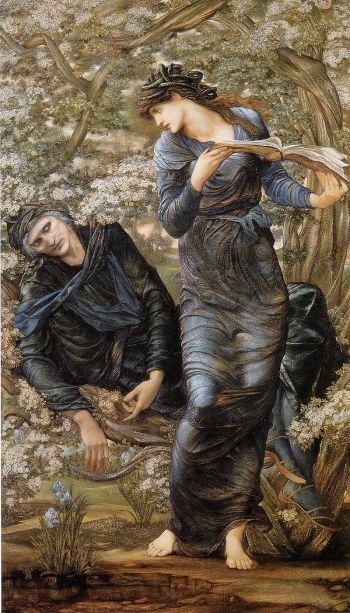

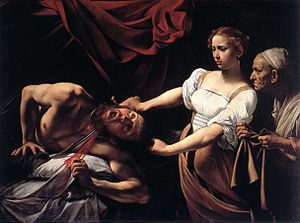
 few times have we seen a female one. We didn’t know what to expect. There was a nationwide gasp when the beautiful Theron transformed herself into the physicality of Wuornos through the help of make-up, but also through something more, a dark vulnerability.
few times have we seen a female one. We didn’t know what to expect. There was a nationwide gasp when the beautiful Theron transformed herself into the physicality of Wuornos through the help of make-up, but also through something more, a dark vulnerability.
 members, but there is no definitive evidence to prove them. She married young to Ferenc Nàdasdy. Shortly before at age thirteen, she gave birth to a child most likely fathered by a male of a lower social class, possibly even a servant. It is no surprise that the child was sent away immediately after birth. Bathory was considered a beauty in her time and following the birth of her first child, got into line with social expectations and often capitalizing on them. If anything, she seemed to become acutely aware of appearances.
members, but there is no definitive evidence to prove them. She married young to Ferenc Nàdasdy. Shortly before at age thirteen, she gave birth to a child most likely fathered by a male of a lower social class, possibly even a servant. It is no surprise that the child was sent away immediately after birth. Bathory was considered a beauty in her time and following the birth of her first child, got into line with social expectations and often capitalizing on them. If anything, she seemed to become acutely aware of appearances.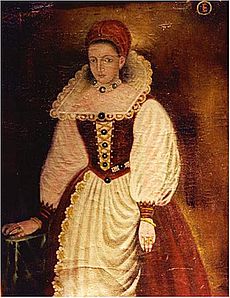



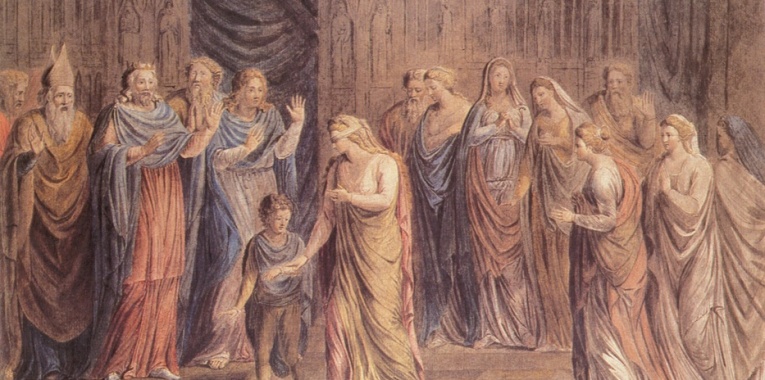
 hadow on the Crown is the first book in Patricia Bracewell’s trilogy about the real-life Emma of Normandy, who was queen of England twice over. Emma was married off to King Æthelred of England in 1002 by her brother Richard, the duke of Normandy, to form an alliance they hope will keep the Danes away from their shores. Although Æthelred’s first wife was only a consort, Richard makes Emma’s crowning a requirement of the treaty.
hadow on the Crown is the first book in Patricia Bracewell’s trilogy about the real-life Emma of Normandy, who was queen of England twice over. Emma was married off to King Æthelred of England in 1002 by her brother Richard, the duke of Normandy, to form an alliance they hope will keep the Danes away from their shores. Although Æthelred’s first wife was only a consort, Richard makes Emma’s crowning a requirement of the treaty. bearing children confers power on women in general and on queens in particular, it’s a power that isn’t absolute. Æthelred’s first wife dies in childbirth, and Bracewell mentions that Emma’s own mother had lost three children in addition to giving birth to eight surviving ones. Emma’s rival for the king’s affections, Elgiva, knows that if Emma has a child, it will reinforce her standing as queen. When Emma becomes pregnant, Elgiva has her waiting woman slip poison into Emma’s wine to cause her to miscarry. There is no easily available source for Emma experiencing a miscarriage, so it’s safe to say this is a fictional part of historical fiction. However, the point stands. Forcing Emma to miscarry is a way for Elgiva to take Emma’s power away and to assert her own.
bearing children confers power on women in general and on queens in particular, it’s a power that isn’t absolute. Æthelred’s first wife dies in childbirth, and Bracewell mentions that Emma’s own mother had lost three children in addition to giving birth to eight surviving ones. Emma’s rival for the king’s affections, Elgiva, knows that if Emma has a child, it will reinforce her standing as queen. When Emma becomes pregnant, Elgiva has her waiting woman slip poison into Emma’s wine to cause her to miscarry. There is no easily available source for Emma experiencing a miscarriage, so it’s safe to say this is a fictional part of historical fiction. However, the point stands. Forcing Emma to miscarry is a way for Elgiva to take Emma’s power away and to assert her own.
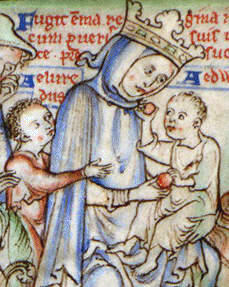 he few forms of power available to them can be inspiring to read about.
he few forms of power available to them can be inspiring to read about.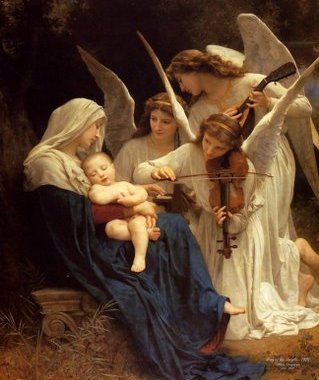
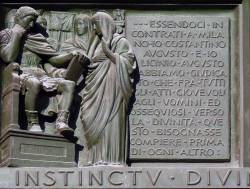 closest to the divine, being newly emerged into the mortal world, theologically asserting that infants exemplified purity. By 787, we see the establishment of the first orphanages in Christianized regions of Italy. In Milan, the Archbishop had a special revolving cradle installed so women could anonymously leave children.
closest to the divine, being newly emerged into the mortal world, theologically asserting that infants exemplified purity. By 787, we see the establishment of the first orphanages in Christianized regions of Italy. In Milan, the Archbishop had a special revolving cradle installed so women could anonymously leave children.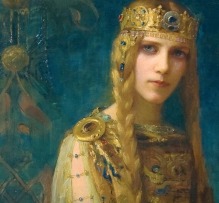 But it wasn’t just a sense of heightened morality and compassion instituted by religious conversion that created these changes. After the failings of partible inheritance, primogeniture developed, a system of inheritance that depended on first-born children of the sovereign. This system was not only in the interest of the ruling family, but to the fiefdoms of early Medieval Europe who also practiced primogeniture in their own households. In the post-Roman world, hyper-localism reigned in order to maintain pockets of stability. Broken systems of inheritance or uncertain heirs often led to fractured support of the elite classes who contributed to military power. When this happened, the already tenuous balance would shift and ultimately led to grabs for power, conflict and war. The birth of heirs, became overwhelming stressed for the preservation of social and economic order.
But it wasn’t just a sense of heightened morality and compassion instituted by religious conversion that created these changes. After the failings of partible inheritance, primogeniture developed, a system of inheritance that depended on first-born children of the sovereign. This system was not only in the interest of the ruling family, but to the fiefdoms of early Medieval Europe who also practiced primogeniture in their own households. In the post-Roman world, hyper-localism reigned in order to maintain pockets of stability. Broken systems of inheritance or uncertain heirs often led to fractured support of the elite classes who contributed to military power. When this happened, the already tenuous balance would shift and ultimately led to grabs for power, conflict and war. The birth of heirs, became overwhelming stressed for the preservation of social and economic order. her, women’s access to easy movement became limited. Power for elite women, was derived from her family, husband and particularly her position as mother of male heirs. Mothers were responsible for the basic indoctrination and instruction of their children into Christian values. Oddly enough, mothers became the backbone of the perpetuation of their own suppression, but also the elevation of children as important parts of the social order. Advanced education for boys, occurred after this period by male instructors.
her, women’s access to easy movement became limited. Power for elite women, was derived from her family, husband and particularly her position as mother of male heirs. Mothers were responsible for the basic indoctrination and instruction of their children into Christian values. Oddly enough, mothers became the backbone of the perpetuation of their own suppression, but also the elevation of children as important parts of the social order. Advanced education for boys, occurred after this period by male instructors.
